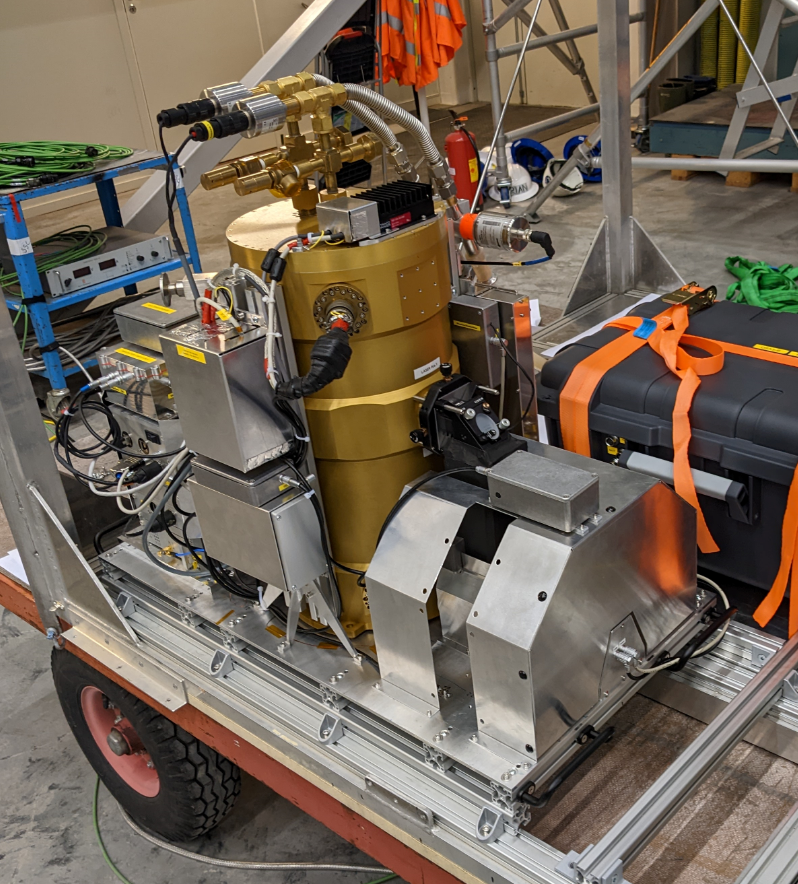IRLabs Pioneers Solutions for High Altitude Scientific Exploration
 In the pursuit of scientific knowledge, the German Aerospace Center (DLR) embarked on a mission to explore the enigmatic properties of atomic oxygen in Earth’s upper atmosphere. Understanding the impact of this element on satellite corrosion, deceleration in low-Earth orbits and its role as an indicator of climate change held great importance for DLR’s research. Its ambitious endeavor involved deploying the OSAS-B oxygen spectrometer as part of Europe’s HEMERA balloon campaign. For this intricate task, DLR sought the expertise of Infrared Labs (IRLabs), a respected industry leader boasting decades of experience in high altitude cryostats.
In the pursuit of scientific knowledge, the German Aerospace Center (DLR) embarked on a mission to explore the enigmatic properties of atomic oxygen in Earth’s upper atmosphere. Understanding the impact of this element on satellite corrosion, deceleration in low-Earth orbits and its role as an indicator of climate change held great importance for DLR’s research. Its ambitious endeavor involved deploying the OSAS-B oxygen spectrometer as part of Europe’s HEMERA balloon campaign. For this intricate task, DLR sought the expertise of Infrared Labs (IRLabs), a respected industry leader boasting decades of experience in high altitude cryostats.
Challenges in High Altitude Scientific Endeavors-Operating in the upper atmosphere on a balloon gondola posed unique challenges for the OSAS-B project. The key concerns were ensuring airtight seals of the vessel during temperature and pressure changes experienced during ascent and descent, meeting strict size and weight budgets of the gondola, withstanding impacts during flight and landing, and maintaining cold plate temperature and stability despite fluctuating conditions that could hinder contact between the liquid cryogens and the cold plate.
IRLabs’ Tailored Solutions-IRLabs’ reputation in custom solutions and collaborative approach to projects made the company a perfect fit for the OSAS-B venture. Understanding the limitations of traditional O-ring seals in the upper atmosphere where freezing could lead to vacuum leaks, IRLabs innovatively designed two types of seals: O-ring seals for DLR team access in the lab and indium metal seals that endure freezing, ensuring an airtight seal during high altitude flight.
Achieving the perfect balance between vessel size, weight and capacity proved essential for the gondola's stability. IRLabs meticulously reduced the case mass by incorporating only the necessary features for sensor and equipment mounting, while removing any unnecessary material. Moreover, the team reduced flat mounting surfaces on the cylinder, streamlining the design and minimizing weight. These thoughtful enhancements ensured the vessel would accommodate extended hold times of over 24 hours while adhering to stringent size limits.
Resilience against high impact landings was of critical importance to the project. Balloon-mounted instruments are susceptible to shocks during flight and landing, putting the equipment's integrity at risk. To safeguard the OSAS-B during these potential impacts, IRLabs implemented rigid internal supports, securing the internal vessels and ensuring their survival even in challenging conditions.
 Likewise, thermal performance needed to be optimized for the project’s success. The unique conditions of freezing liquid nitrogen during operation presented yet another obstacle. This interference threatened the contact between the solidified nitrogen and the cold plate, affecting thermal performance. IRLabs’ dedication to excellence led them to conduct extensive lab testing to find the most effective solution. The upgrading of absolute pressure regulators to motorized regulators emerged as the ideal choice, providing precise control of internal pressure and cold plate temperature.
Likewise, thermal performance needed to be optimized for the project’s success. The unique conditions of freezing liquid nitrogen during operation presented yet another obstacle. This interference threatened the contact between the solidified nitrogen and the cold plate, affecting thermal performance. IRLabs’ dedication to excellence led them to conduct extensive lab testing to find the most effective solution. The upgrading of absolute pressure regulators to motorized regulators emerged as the ideal choice, providing precise control of internal pressure and cold plate temperature.
Triumph and Further Exploration-The collaborative efforts of DLR and IRLabs culminated in the successful launch of the OSAS-B to an impressive altitude of 33 km. It flawlessly collected valuable data, furthering scientific knowledge. The triumphant return to the ground has paved the way for future launches, reinforcing IRLabs’ reputation as a pioneering force in high altitude scientific exploration.
 IRLabs’ remarkable contributions to the OSAS-B project exemplify their commitment to pushing boundaries and conquering challenges in the world of high altitude cryostats. As it continues to forge ahead with innovative solutions, IRLabs solidifies its position as a leading partner for groundbreaking research and exploration in the ever-evolving field of science.
IRLabs’ remarkable contributions to the OSAS-B project exemplify their commitment to pushing boundaries and conquering challenges in the world of high altitude cryostats. As it continues to forge ahead with innovative solutions, IRLabs solidifies its position as a leading partner for groundbreaking research and exploration in the ever-evolving field of science.
Image 1:A High-Flying Mission: The OSAS-B Oxygen Spectrometer, aboard the HEMERA balloon gondola, can ascend to 33 km, capturing crucial data on atomic oxygen in Earth's upper atmosphere. IRLabs' innovative solutions ensured a successful high-altitude scientific expedition. Credit: David Laneville ; Image 2: IR Labs HDL8 dewar customized for upper atmospheric research. Credit: IRLabs; Image 3: The HEMERA gondola being prepared for launch. Credit: German Aerospace Center; Image 4: OSAS-B mounted on the balloon gondola. Credit: German Aerospace Center



